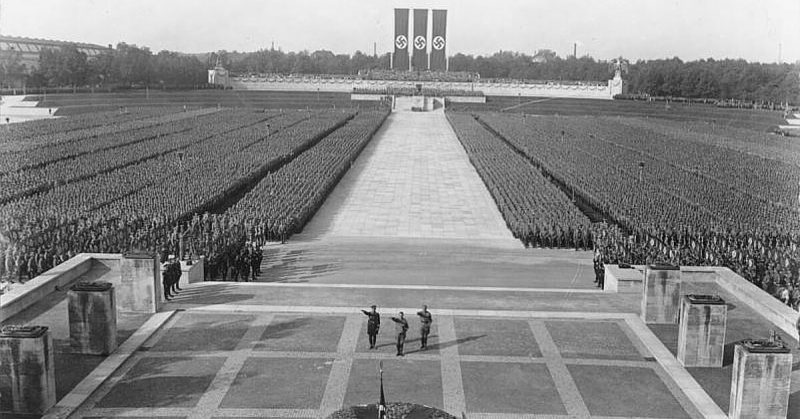Before he was the Fuhrer, he was a Gefreiter in the Imperial German Army, a rank equivalent to Lance Corporal. Before he was a nationalist, he was a painter, documenting the everyday life on the battlefield.
Adolf Hitler survived the First World War describing it as “the greatest of all experience”. He was appointed as a dispatch runner for the Bavarian Reserve Infantry Regiment 16. Even though his position was a rather fortunate one, since he spent most of his time in the headquarters, he was wounded several times and given the Iron Cross, 1st and 2nd class and a Black Wound Badge.
After the war, he nurtured the image of a disappointed foot soldier, the image, which many Germans in the immediate post-war period could relate to. These are the ten events that laid the foundation for his rise to power and his role in the biggest conflict in history.
1 Treaty of Versailles
The start of the rise of Hitler was the peace treaty signed in Versailles in 1919, which served as a severe punishment for the German involvement in the First World War. The treaty stripped Germany of all its colonies in Africa and the Far East. A large part of the European German territory was given to France and Belgium and due to reparation agreements, most developed industrial regions, the Ruhr and Saar, were occupied by the French.
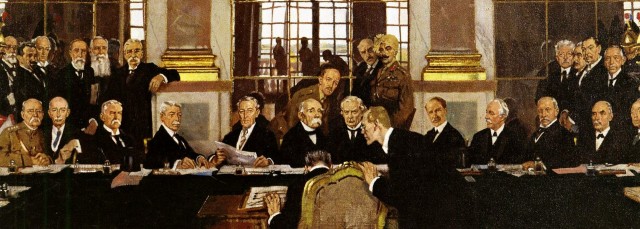
The industry was used explicitly for the benefit of the occupying power. The treaty also included large limitation on the German Army, which has turned the Imperial Army into a symbolic interior peace-keeping force.
These circumstances caused mass unemployment and hyperinflation. Also, after the Great War, Germans felt humiliated by their historic enemies, the French, who had designed the peace agreement. Hate and despair were looming across the remnants of an empire and the situation provided fertile ground for a dictatorship .
2 The Stab in the Back Myth
The harsh conditions of the Treaty of Versailles helped create a conspiracy theory that became extremely accepted among the Germans. The Stab in the Back myth meant that it wasn’t the Army to blame for losing the war, but the workers led by Bolsheviks and Jews.
Hundreds of worker strikes were held in Germany in the period of 1916-1918, due to hunger and general discontent on the home front, this was merely a consequence of the exhausting war effort which was bleeding the country dry. The nationalists blamed the politicians for signing the capitulation on November 11th, 1918, calling them The November Traitors, since the army left the front undefeated.
Hitler used the myth to spread hatred towards Jews and political adversaries alike, as the National-Socialist German Workers Party (NSDAP) grew larger in numbers, under the leadership of Anton Drexler. Drexler was Hitler’s mentor and a political father-figure in his early days. They gathered the disbanded soldiers without a job and angry citizens of all classes, reviving old Germanic legends and historical accomplishments that evoked pride towards the nation and hatred towards the foreigners, so-called traitors, and outsiders of any kind.
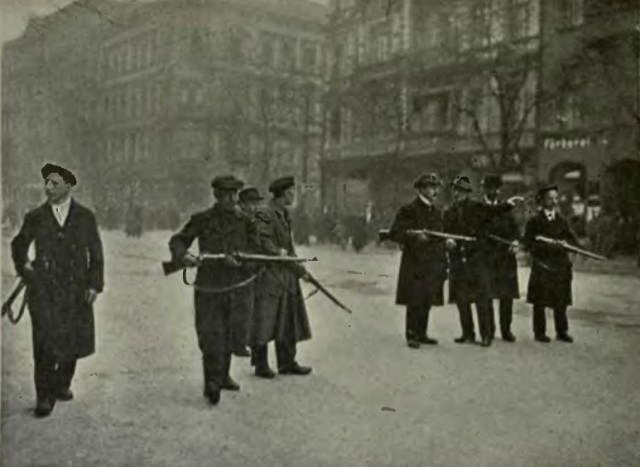
3 The Bavarian Republic/The Spartacus Uprising
The year 1919 was marked by civil unrest across Europe, but especially in Germany. The country transformed into a post-war republic with its capital in the city of Weimar. The Weimar Republic was created with the sponsorship of the winning side to guarantee the decisions Treaty of Versailles. The Republic’s leadership was in an ungrateful position of preserving order in a country that was under constant threat of a civil war between radical groups – left and right alike.
In January 1919, the leftist organization – The Spartacist League, tried to violently take power in Berlin with deadly consequences. The revolt was crushed in by the police force and German paramilitary called the Freikorps. A similar thing happened in Munich that same year, with the forming of the short-lived Bavarian Soviet Republic.
At that time, Hitler had already infiltrated the NSDAP and was known for his rowdy antisemitic and anti-Marxist speeches mobilizing the popular discontent for his own gain while the left elements were slowly losing their momentum after a series of failed revolutions.
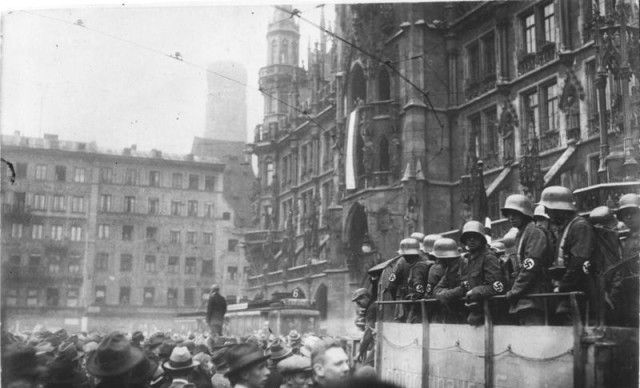
4 The Beerhall Putsch
In 1921, Hitler became the head of the NSDAP and in 1923, he attempted a coup in Munich that shook the foundations of the Weimar Republic. Burgerbraukeller was the famous beer hall in Munich in which the riots started. The putsch was inspired by the March on Rome, a coup that landed Benito Mussolini in power only a year earlier. The Party already had a military wing called SA – Storm Detachment.
They had about 600 SA members surrounding the beer hall and a machine set up on the auditorium. Hitler declared a national revolution in the hall and called everyone to join him, in a hostage-like situation, since there was a machine gun behind him. About 2,000 people gathered in support of the Nazi Party and they headed to the Munich main square Marienplatz where he gave an inflammatory speech ending it with a sentence:
“Either the German revolution begins tonight or we will all be dead by dawn!”
The response came quickly but not as bloody as the earlier uprisings in Berlin and Munich. In the last attempt to overthrow the Bavarian government, the putschists marched to the Ministry of Defense, where they were met by a force of 130 armed soldiers. After a short skirmish, 16 Nazi supporters were dead and Hitler was lightly wounded. The Bavarian Army lost 4 soldiers.
Hitler was arrested and a trial was held in which he had yet another chance to practice his speaking skills. The judges were pro-Nazi oriented and he was sentenced to five years but got out only a year later. Leading figures of other coup attempts like the Spartacus uprising were all shot for treason. This shows that Hitler had a huge amount of sympathy from the ruling elites.
In the meantime, in prison, he wrote his manifesto, Mein Kampf. The putsch was a Nazi propaganda victory, that turned the nation’s attention to Munich and Hitler.
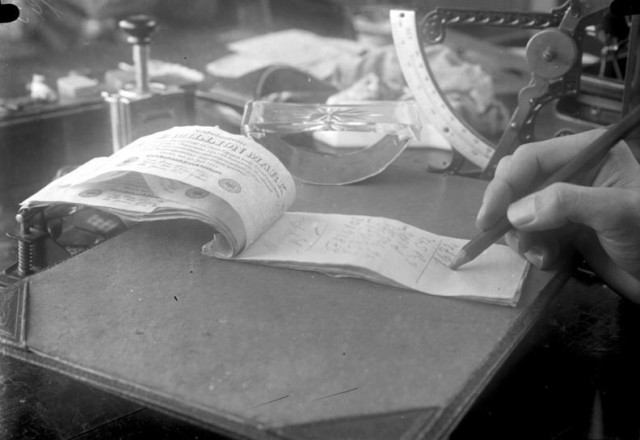
5 The Financial Crisis, 1929
The Great Depression was a serious blow to German already unstable economy. Widespread unemployment reached 25% as every sector was hurt. The government did not increase government spending to deal with Germany’s growing crisis, as they were afraid that a high-spending policy could lead to a return of the hyperinflation that had affected Germany in 1923. Germany’s Weimar Republic was hit hard by the depression, as American loans to help rebuild the German economy now stopped.
A change in the government shift was inevitable. The Weimar government ,was ineffective and the people considered Hitler to be the leader capable of regaining Germany’s former glory. In the meantime, his antisemitic propaganda had affected the population to a significant extent and he was preparing to shift his politics from the streets into the parliament.
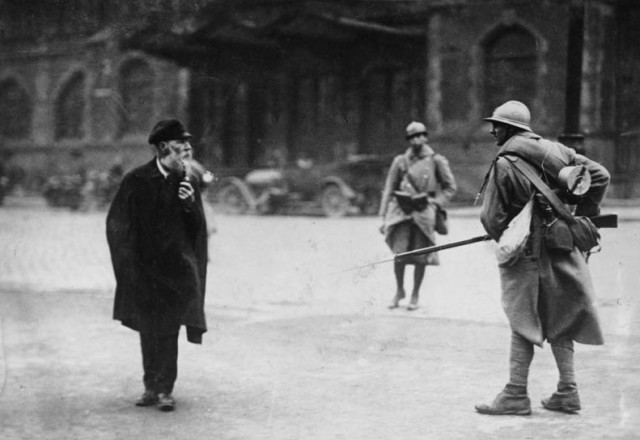
6 German Referendum 1929
German referendum of 1929 was held to vote the “Law against the Enslavement of the German People”, which referred to the famous Treaty of Versailles and it denounced all its decisions by the German people and government. The referendum was very favorable to the Nazi Party and again won them public attention, since Hitler was the loudest opponent of the treaty signed in 1919. “Adolf Hitler” by this time became a well-known name in every household in Germany.
In addition to this, he made an important step in campaigning with the more mainstream right-wing political parties with whom he formed a coalition to see the referendum through. This gave him a wider support as he was recognized by the more traditional nationalist voters.
The referendum itself had very low voter turnout, at only 14 %, but 94% of those voters were in favor of denouncing the treaty. Nevertheless, the turnout wasn’t enough for the referendum to pass and this event proved to be yet another victory for Hitler and raised his profile, with no real consequences in German politics.
7 German Federal Reichstag election 1930
In 1930, Federal elections the Nazi Party showed considerable growth earning 107 seats out of 577 in the Reichstag (German Parliament). The party which held the most seats was the Social Democrat Party, but the Nazis were gaining ground in state affairs. The other important fact is that the traditional nationalist party, DNVP, which was an alliance of nationalists, reactionary monarchists, völkisch, and antisemitic elements lost its influence in the Reichstag and it slowly fragmented, as its supporters stood behind Hitler, whom they saw as their new leader.
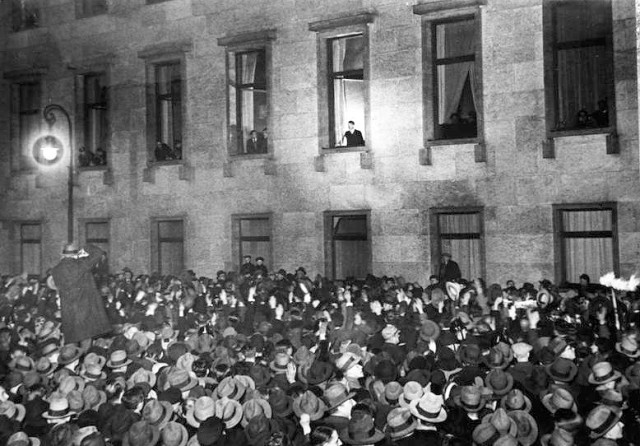
8 Hitler uber Deutschland – the election 1932
On 13th of March, 1932, Adolf Hitler became the main opposition candidate to Paul von Hindenburg in the elections. Hindenburg was an aging war hero who was appointed president in 1925. This was to be Hindenburg’s second seven-year term, but his real political power faded as he himself became disappointed with the Weimar Republic. In the end, he remained president, only because of the grudging support of the Social Democrats, who were keen on keeping him in the office, just to deny that right to Hitler.
Hitler’s rhetoric was often pointed directly against the Social Democrats, who leaned towards the left-wing politics at that time. Hindenburg thought he could rely on Hitler, who came second in the elections and appointed him Chancellor of Germany. At this point, Hitler was a popular figure who had the support of conservative politicians, huge industrialists, soldiers, and workers alike.
He incorporated the idea of technological progress into his concept of racial purity as he saw Germany as the leading force in Europe, opposed to the primitive peoples of other races. He justified colonialism and slavery, as he believed that one nation is superior to all others. His campaign during the elections was marked by hate-speeches, which anticipated his future politics.
He also became known as the first politician to utilize the airplane as a fast means of transport from one rally to another, across the country. The campaign was popularly known as “Hitler above Germany” because of his flights and a record number of political rallies.
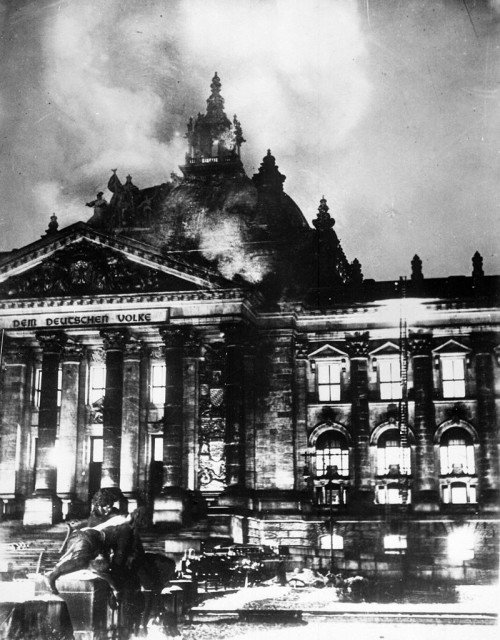
9 The Reichstag Fire or Nero burning Rome
The Reichstag fire occurred on February 27th, 1933. It was an arson attack on the building of the German parliament, known as the Reichstag. The event is recognized as pivotal for the establishment of the Nazi dictatorship in Germany. Just weeks earlier, Adolf Hitler was preparing to push through the Enabling act as a Chancellor of Germany, that would give him extraordinary powers to deal with his political adversaries in an undemocratic way.
During the elections in 1932, he already began a propaganda campaign claiming that the communists were preparing a revolution in Germany. This claim improved his image with the middle class who had reasons to fear the revolution and the confiscation of property that follows.
On the eve of the fire, a young Dutch communist Marinus Van Lubbe was arrested and he confessed he was the culprit. After the arrest of Van Lubbe, three more Bulgarian communists were imprisoned as accomplices.
Among them was a high ranking Comintern agent, Georgi Dimitrov. The Bulgarians were set free, but Van Lubbe was executed. The fire gave wings to Hitler as he now had proof that the communists were plotting against the state. The event remained a mystery to this day, as most historians claim that Van Lubbe acted alone while some of them think that it was a false flag operation conducted by the Nazis to gain complete control and deal with their main political opponents in unconstitutional ways.
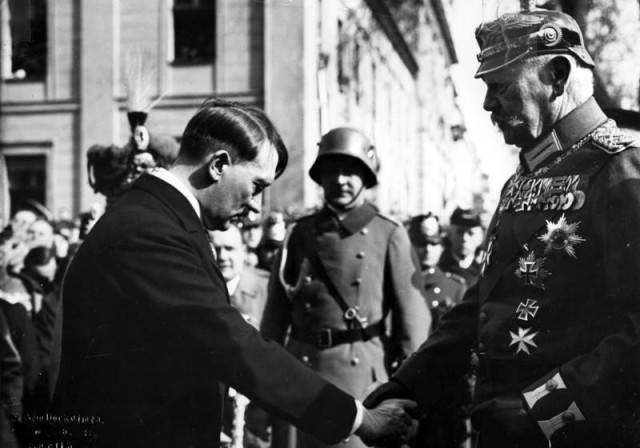
10. The Banning of Political Competition
After the Reichstag fire, Hitler had initiated the Enabling act. He was now capable of enacting laws without the consent of the other parties in the parliament for four years. These laws could in some cases even deviate from the constitution. It was absolute power for Hitler, from this point on. Having achieved full control over the legislative and executive branches of government, Hitler and his allies began to suppress the remaining opposition.
The Social Democratic Party was banned and its assets seized. While many trade union delegates were in Berlin for May Day activities, SA stormtroopers demolished union offices around the country. On 2nd May 1933, all trade unions were forced to dissolve and their leaders were arrested.
Some were sent to concentration camps. The German Labour Front was formed as an umbrella organization to represent all workers, administrators, and company owners, thus reflecting the concept of national socialism in the spirit of Hitler’s Volksgemeinschaft (“people’s community”).
After banning the left elements in the country, Hitler turned against his coalition partners, the nationalists from the DNVP, making their influence minimal. The next step was a purge among his own ranks in the SA. The SA saw itself as Hitler’s paramilitary organization, that should be granted more political and military power. But an autocratic leader couldn’t let anyone get in his way, so he removed the entire SA leadership, crowning his decision with the execution of Ernst Rohm, the official leader of the SA.
At that point, Germany was in his firm grip, and he could focus on foreign policy and the final dismantle of the Treaty of Versaille.
